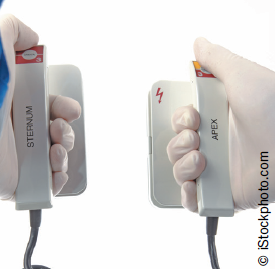 Drug therapies include anticoagulants to reduce the risk of stroke and anti-arrhythmics to restore/maintain the normal heart rhythm or slow the heart rate in patients who remain in AF. Non-pharmacological management options include electrical cardioversion, which may be used to ‘shock’ the heart back to its normal rhythm.
Drug therapies include anticoagulants to reduce the risk of stroke and anti-arrhythmics to restore/maintain the normal heart rhythm or slow the heart rate in patients who remain in AF. Non-pharmacological management options include electrical cardioversion, which may be used to ‘shock’ the heart back to its normal rhythm.
The high risk of stroke associated with electrical cardioversion can be reduced by oral anticoagulation. Although effective in reducing the risk of thromboembolism, the limitations of warfarin present considerable challenges for its use in clinical practice. The challenges of maintaining warfarin within an appropriate therapeutic range combined with increased bleeding risk may contribute to issues with long-term treatment compliance.
Non-vitamin K oral anticoagulants (NOACs) have demonstrated comparable efficacy and safety profiles with warfarin for thromboprophylaxis in non-valvular AF patients undergoing cardioversion.
It is important that local arrangements for use of antithrombotic therapies in non-valvular AF should be reviewed and policies developed for integration of NOACs into the care pathways. Primary care prescribing of NOACs needs local leadership and, as the AF ‘epidemic’ continues to increase, local anticoagulant ‘champions’ will be required to take the lead.
This supplement, which has been initiated and funded by Bayer looks at developments in the use of oral anticoagulants in direct current cardioversion. It has been written by a medical writer with national insight gained from:
- Craig Barr – Consultant Cardiologist, The Dudley Group NHS Foundation Trust, Dudley
- Evaun Teoh – Arrhythmia Nurse Specialist, St George’s Hospital, London
- Shaumik Adhya – Clinical Lead for Cardiology, Medway NHS Foundation Trust, Medway

